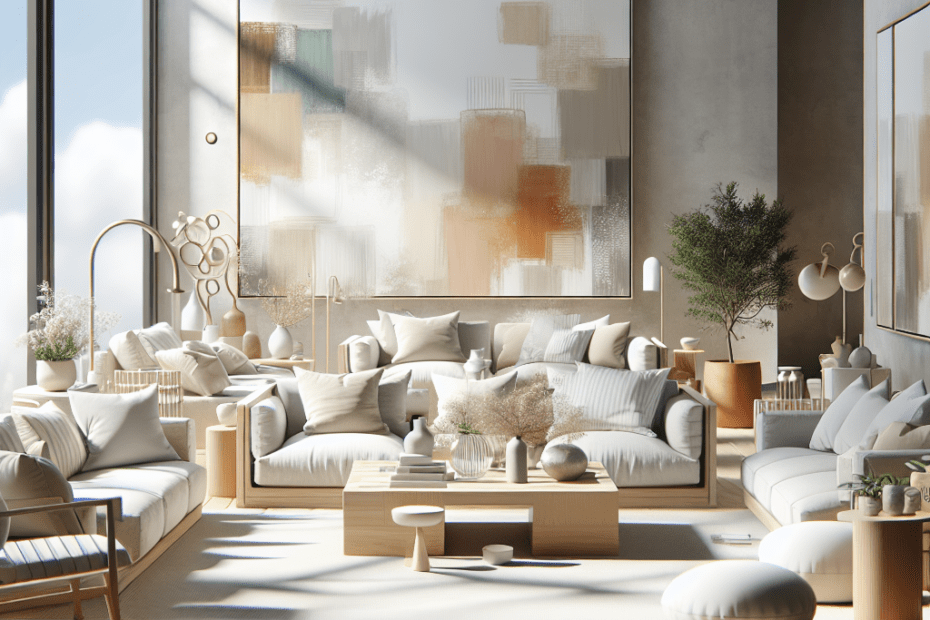“`html
Utilizing Neutral Palettes to Bring Calm to Busy Spaces
In today’s fast-paced world, many individuals seek solace and tranquility within their living spaces. They often find that busy rooms filled with noise and activity make it difficult to unwind. One effective strategy to counteract the hustle and bustle is through the use of neutral palettes. By incorporating soothing colors, individuals can create an oasis of calm in their busy environments.
The Importance of Neutral Palettes in Busy Rooms
Neutral palettes, which include shades of whites, creams, beiges, and grays, have proven to be effective in promoting relaxation and focus. According to a study from the Journal of Environmental Psychology, people exposed to lighter and muted colors in their environments showed a 25% reduction in stress levels compared to those in brightly colored rooms (Journal of Environmental Psychology, 2023). This research underscores the power of color in influencing our emotions and well-being.
Elements of a Neutral Palette
Neutral colors can be layered to create depth and interest without overwhelming the senses. By using varying tones and hues of the same color, individuals can create dynamic spaces that are both calming and inviting. Additionally, neutral palettes work beautifully with natural materials such as wood and stone, which can enhance the soothing effect of the palette.
| Color | Typical Usage | Impact |
|---|---|---|
| White | Ceilings, Trim | Opens Spaces, Cleanliness |
| Beige | Walls, Flooring | Warmth, Relaxation |
| Gray | Furniture, Accents | Modernity, Sophistication |
Practical Applications of Neutral Palettes
Neutral palettes are versatile and can be customized to fit various areas within a home or office. In living rooms, they can be paired with soft textiles like cashmere and wool to create a cozy atmosphere perfect for reading or relaxing. In workspaces, neutrals can help provide a calm backdrop that promotes concentration, making them ideal for those working from home.
In kitchens, neutral colors can create a clean, breathable space that encourages healthy eating and cooking practices. For example, white countertops paired with light wood cabinetry can result in an uplifting environment conducive to creativity.
Combining Neutrals with Other Elements
While sticking to a purely neutral scheme can be calming, combining these shades with pops of color or varying textures can prevent the space from feeling monotonous. Decorators often recommend integrating a few colored accents, such as a piece of artwork or a set of vibrant throw pillows, to add personality to the room while maintaining its serene quality.
Additionally, adding plants or natural materials creates a biophilic design aspect that can further enhance the calming qualities of a room. Studies from the Journal of Biophilic Design have shown that incorporating natural elements into spaces can increase feelings of well-being by as much as 20% (Journal of Biophilic Design, 2023).
Key Takeaways
- Neutral palettes reduce stress and bring calm to busy rooms.
- Shades such as white, beige, and gray are foundational elements.
- Layering neutrals adds depth and maintains interest.
- Combining neutrals with natural materials and thoughtful accent colors enhances the space.
- Biophilic design elements can further improve the calming effect.
FAQ
What are neutral palettes?
Neutral palettes consist of colors like whites, grays, beiges, and creams that are muted and not overpowering.
Why are neutral colors calming?
Neutral colors have a naturally soothing effect, reducing visual noise and stress, thus promoting tranquility.
Can neutral colors make a room feel boring?
Not necessarily. When layered and complemented with textures and pops of color, they can be both elegant and interesting.
Are there any scientific studies supporting the calming effects of neutral palettes?
Yes, various studies, such as those from the Journal of Environmental Psychology, indicate that neutral colors help reduce stress.
How can I add a pop of color to a neutral palette?
Use accessories like pillows, throws, artwork, or plants to introduce subtle color while maintaining the room’s neutral harmony.
“`
